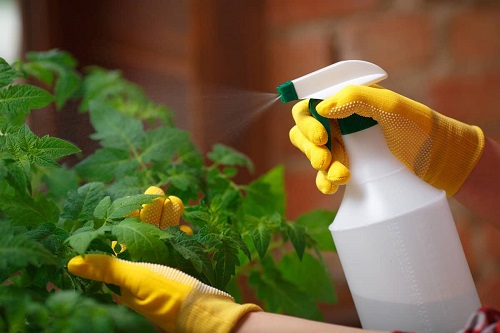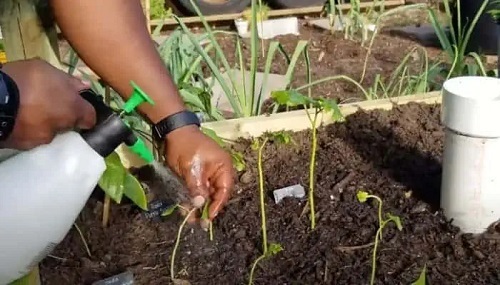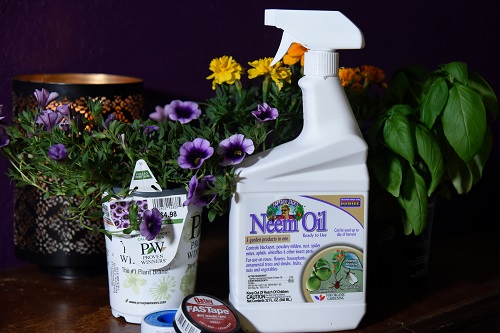Do You Spray Neem Oil on Soil or Leaves – this question is often a debate among gardeners, and we’ll help to answer this for you!
Neem oil is potent in keeping a wide array of garden pests and diseases at bay. But, when it comes to application, do you target the soil or the leaves? Let’s find out!
Discover Ways to Use Neem Oil for Houseplants to Kill Pests and Diseases in this Post
Spraying Neem Oil on Leaves
Pros:
- When applied on leaves, it acts directly on pests like aphids, mites, and whiteflies, killing and preventing them from feeding on the plant.
- Neem oil is most effective against powdery mildew and rust when applied this way.
- Leaf application provides quick results.
Cons:
- Overuse or incorrect dilution can lead to leaf burn, especially in hot weather.
- Neem oil breaks down quickly with exposure to sunlight and rain, requiring frequent reapplications.
- It may not reach pests or diseases in the soil (Obviously!).
Read Organic Neem Oil Uses for Garden in this Post
Spraying Neem Oil in Soil
Pros:
- Soil application can control soil-borne larvae and pests like root aphids and nematodes.
- Avoids the risk of leaf burn associated with foliar spraying.
Cons:
- It takes time for the plant to absorb neem oil from the soil, delaying pest control effects.
- It may not effectively control pests and diseases that affect the foliage directly.
- Excessive use in soil could affect beneficial microorganisms.
Check Out Coconut Oil Uses in the Garden & Home in this Guide
Right Dilution and Application
Mix 2 tablespoons of neem oil and 1-2 teaspoons of liquid soap (as an emulsifier) with a gallon of water.
- Always test the diluted solution on a small part of the plant and wait 24 hours to check for adverse reactions.
- Spray in the early morning or late afternoon to avoid leaf burn.
- Always shake well before using, as oil and water separate quickly.
- Re-apply every 7 to 14 days for effective control, especially after rain or watering.
Discover Castor Oil Uses in the Garden in this Post
Conclusion
The best method for using neem oil in your garden largely depends on the specific issues you are addressing:
- For pests like aphids, spider mites, or fungal diseases affecting the leaves and stems, spraying neem oil directly on the leaves (foliar application) is more effective. This method ensures direct contact with the pests and diseases, providing quicker and more targeted action.
- If your concern is more about soil-borne pests, applying neem oil to the soil is a better choice. This method is slower in action but helps control pests like root aphids and nematodes, contributing to the overall health of the plant.





